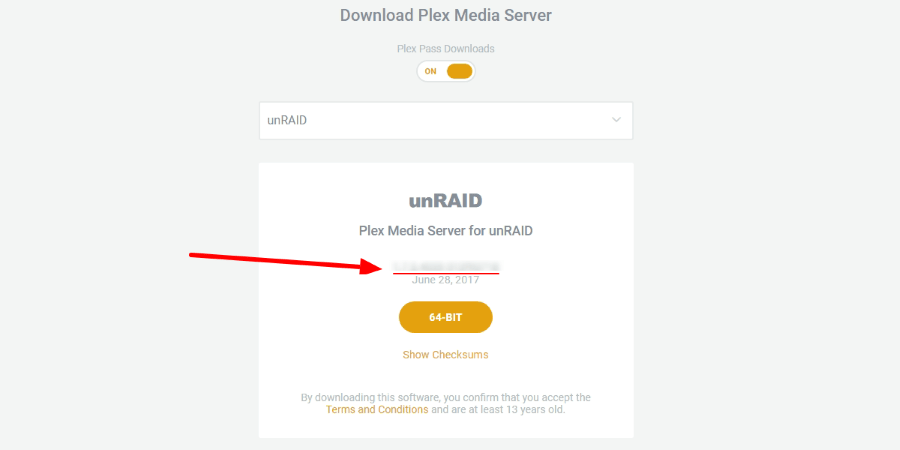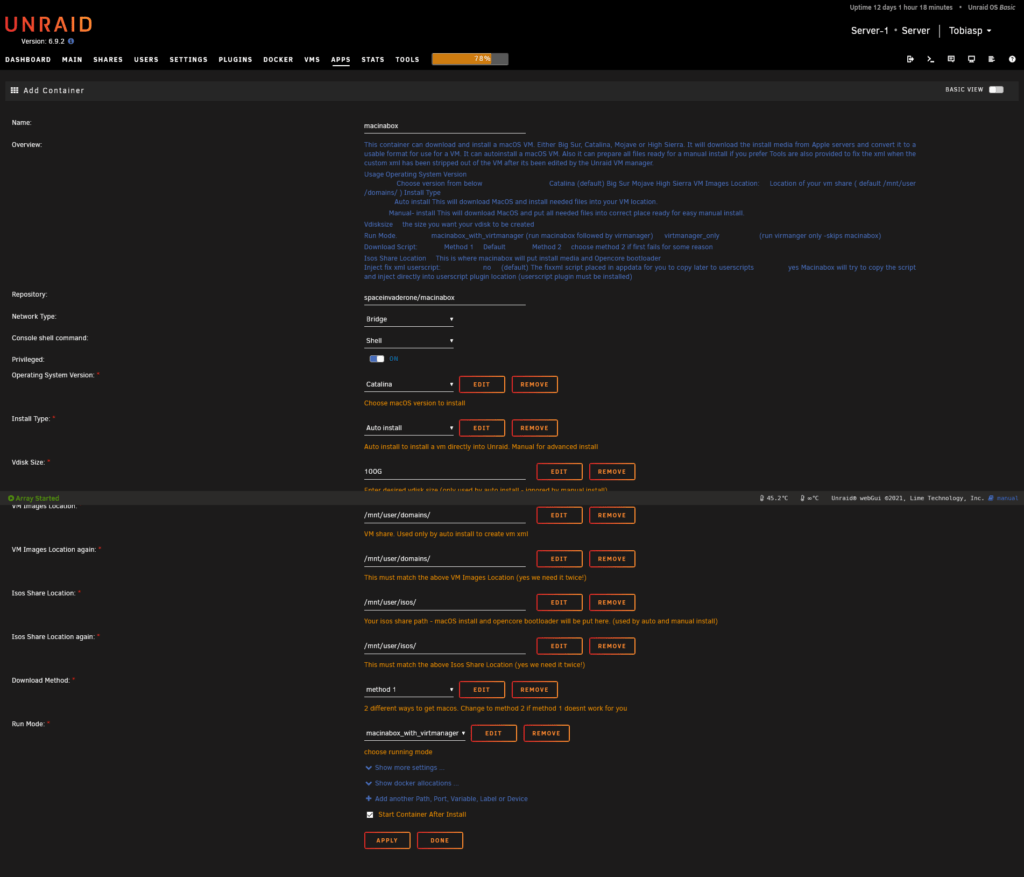

- UNRAID PLUGINS DOWNLOAD HOW TO
- UNRAID PLUGINS DOWNLOAD MOVIE
- UNRAID PLUGINS DOWNLOAD INSTALL
- UNRAID PLUGINS DOWNLOAD PORTABLE
- UNRAID PLUGINS DOWNLOAD SOFTWARE
But if you want to remove the plugin you have installed, there is no need to enter the store again.ģ. Click the trash can or detailed information to remove the plugin or toolbar you don't want.
UNRAID PLUGINS DOWNLOAD INSTALL
Google doesn't allow third-party programs to change its default settings randomly, so if you want to add plugins or toolbar in Chrome, you may need to download and install it in Chrome Webstore. Remove Plugins & Toolbar on Mozilla FireFoxĢ. Click "Add-ons" and choose "Extensions"ģ. Right-click to remove the plugin or toolbar you don't want. Remove Plugins & Toolbar on Microsoft Edgeġ. Open Microsoft Edge, click (.) on the top ģ. Locate at the plugin or toolbar you want to remove and right-click to remove it. Too many toolbars in the browser will slow down the surfing speed or interface inefficiency if overloaded bars are placed on small windows.
UNRAID PLUGINS DOWNLOAD SOFTWARE
Toolbars are seen in many types of software and web browsers. In computing, a toolbar is a graphical control element where on-screen buttons, icons, menus, or other input or output elements are placed. Well-known browser plugins include the Adobe Flash Player, the QuickTime Player, and the Java plug-in. Generally, a plugin is used in web browsers to add some new features including search engines, virus scanner, ads removal etc.
UNRAID PLUGINS DOWNLOAD HOW TO
How to Remove Plugins and Toolbar in BrowsersĪ plugin is a software component that adds a specific feature to an existing computer program. a little of command line at the beginning (bridge, pci-passthrough. Easier to setup a UPS on your host (omv-ups) Share all the memory with the VM and the container

Reserve Memory specificly for OMV (such as I have 10TB of storage (1 GB of Ram per TB of storage is recommended (at least with zfs)) It makes it easier to migrate and/or to reinstall (in case). The main advantage is to keep Proxmox and OMV as simple as it is and without any trans-configuration. Personally, I only use UnRaid for a trial a while ago, then I was installing KVM on OMV, then I decided to use Proxmox and make a VM for OMV and I stick to that like ryecoaaron suggested. Cockpit: to manage everything under one interface storage, VM, Container, … FlashMemory: since UnRaid mount his system in memory SnapRaid: to manage your storage like UnRaid Now You could install OMV on a USB ThumbDrive and use these plugins Dedicated USB ThumbDrive for the installation (Yes, if I understood well, your license is link to a MD5 based on the size of your USB Drive) Support in the forum is not that great, a lot of people ask question, few answers That said, if you understand the PGID and PUID concept and draft a plan of which data goes where for which services, you will be good.
UNRAID PLUGINS DOWNLOAD MOVIE
UnRaid have a pretty Foolproof Docker Interface management (even easier than Portainer) it is easy to share data through different containers, such as if you download movie with qBittorrent then being able to access them via Kodi or Plex is easy. UnRaid don't use RAID it make a JBOD (just a bunch of disk) with a parity (I don't really know here) but it sounds pretty much like SnapRaid proposed by OMV.ģ. Of course KVM support PCI Passthrough, it is just more command line to do than with UnRaid.Ģ. Another great example is to use your GPU with a Kodi container. UnRaid shine by supporting out of the box PCI Passthrough, so if you want to play video game on your Windows VM and use keyboard, mouse, GPU and screen it will be pretty easy to do at one condition you have the right motherboard and the right GPU. My google search gives me lots of result about using PROXMOX instead and virtualizing both OMV and Windows separately but i don't know, is it worth adding another hypervisor? what would be the best approach? maybe even another one?!ġ. My understanding is that unRAID uses KVM, is it right? then can't OMV also use KVM the same way? īut unRAID has this big price tag and annoying USB-stick licensing mess. So LTT has achieved this a few times with unRAID and the process appears to be pretty streamlined and user friendly, forwarding the GPU and inputs to the VM, assigning cores, and run the thing. so maybe one day i'll make another build that's limited to MAME and Retroarch but for now i wanna have the choice
UNRAID PLUGINS DOWNLOAD PORTABLE
I know, some guru swill ask "why not just run the arcade cabinet in linux anyway?" and the answer is teknoparrot, Supermodel, and preconfigured portable Launchbox. Virtualize W10 over a linux NAS for reliable file vault whose spare power can be used by an arcade cabinet As i'm building my weird multipurpose NAS, i'm trying to figure out how to do it best, the thing i'm trying to achieve is :


 0 kommentar(er)
0 kommentar(er)
